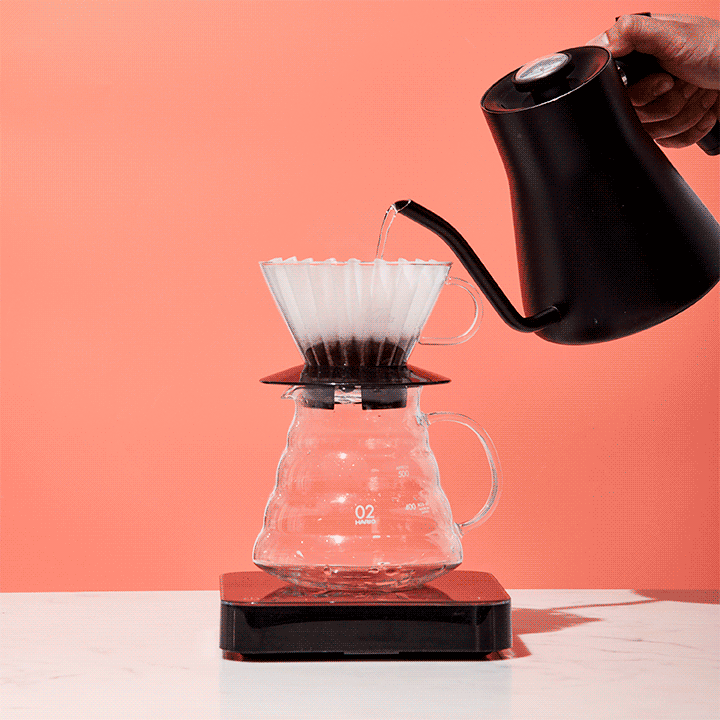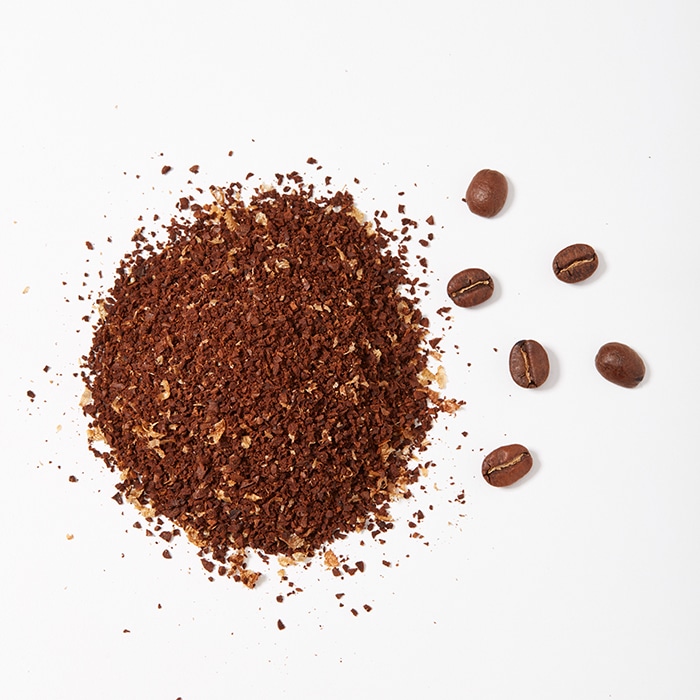For many of us, brewing coffee at home is not only a necessary step in getting our day started, it’s also a rewarding daily ritual, a moment of mindfulness. Whether you’re new to brewing at home or you’re regularly tweaking your recipe in pursuit of the perfect cup, there are a few simple concepts that will help you master the art of the home brew.
To get started, pick your brew method and take a look at our brew guides for Chemex, Kalita Wave, Aeropress, Hario V60, and espresso. Each guide provides step-by-step instructions for tried and true recipes specific to each brew method. Beyond straight technique however, there are other variables that can impact the success of a cup, so we have delved into each of these factors in this guide to lend a helping hand to all of you home baristas out there.
This guide is geared towards filter coffee brewing, but the same philosophies can be applied to espresso.

Coffee to Water Ratio
Your coffee to water ratio, frequently referred to as your brew ratio, is the building block of establishing good coffee brewing. If you use too much water to brew a fixed amount of coffee, you will over-extract your coffee, resulting in a cup that is bitter and weak. If you use too little water, you will get a brew that is sour and strong. However, with an appropriate brew ratio, it can be easy to produce consistently sweet and balanced coffees.
So how do you achieve that appropriate brew ratio? We recommend weighing both your coffee and water to get the most precise brew ratio, but if you don’t have a scale at home and prefer to use volumes, this can work too. An industry standard jumping off point is 1:16—for every 1g of coffee, you’ll want to use 16g of water. Scaling this is super easy—if you know you have 25g of coffee you want to brew, just multiply that by 16 to get your water weight of 400g.
If you know you want to brew a large batch of coffee—let’s say 500ml—just divide that by 16 to get your coffee weight of 31.25g (water is essentially a 1:1 conversion from ml to grams). While 1:16 is the most common brew ratio for filter pour over methods and batch brew, immersion methods like French Press and Aeropress typically work better with stronger ratios, closer to 1:14. Of course, if you find you prefer a slightly stronger cup, experiment with a 1:15 ratio, or perhaps 1:17 if you want a more delicate expression.

Grind Size
Grind size is one of the hardest aspects of a brew recipe to talk about because it can be extremely relative. Not only are we talking about the grinding of brittle, organic matter, which is nearly impossible to do with complete uniformity without mindbogglingly expensive equipment, but factors like wear-and-tear, temperature and roast level will all impact how a specific grinder behaves. Putting all of that aside, the grind size of your coffee has a large impact on the quality of your final brew and is one of the first things you can look to if you want to change how your coffee is tasting. A quick disclaimer—you’ll need a burr grinder in order to really take control of this variable. Burr grinders grind coffee between two discs (burrs) that shear the coffee to a specific size. While they’re imperfect as stated above, they are very good at producing even and consistent grinds. Blade grinders on the other hand function more like blenders, blindly hacking away at a mass of beans, leaving you with some coffee powder and some near-whole coffee beans. Uniformity of grind is the most important aspect here. If you don’t have a burr grinder at home, fret not—we can pre-grind coffee for you at our roastery if you select this option at checkout. We’ve done some informal taste tests and pre-grinding with a quality grinder produces better results than grinding fresh with a sub-par grinder every time.
Grind size has a compounded impact on cup quality. When you grind coffee finely, you’re increasing the amount of surface area on every single particle in the coffee filter which will cause them to extract faster. When you coarsely grind coffee, the water has to worker harder to penetrate deeper due to a decreased surface area. This process is called diffusion. An analogy we revisit often in training is cooking garlic—mincing a glove of garlic is going to cause the majority of the clove to cook faster than if you tried to cook it whole, where the center would stay raw while the outside burns. But not only does the size of your grind impact how readily the coffee can extract but it also impacts how quickly the water can flow through the coffee. Another analogy—imagine you have two buckets, each with a hole in the bottom. If you fill one with sand and one with pebbles and dump a gallon of water into each, which one will drain faster? The sand is so fine that there’s little space between each grain, slowing the flow of water, while the pebbles will allow the water to pass more freely. The finer you grind your coffee, the slower the water will flow and the longer your brew will take. The inverse is true the coarser you go—the brew will be shorter because the water can pass more easily through the bed. So what does this all mean for dialing in the grind size for your brew method? Time and taste are your friend. If you’re finding that your coffee tastes harsh or bitter and is brewing slowly, try coarsening your grind. Don’t change anything else—that way you can see the impact of one variable at a time. If your coffee is tasting flat and weak and the brew is quick, trying going a bit finer.
Brew Time
So how long should your brew take? The brew method of your choice will determine the answer. For single cup pour overs, like the Hario V60 or Kalita Wave, anywhere from 2-4 minutes is acceptable depending on your recipe. We like to aim for around 3 minutes. For larger brewers like the Chemex, you should expect a longer brew. We aim for 5 minutes but some recipes extend closer to 7. This is because there’s a larger mass of coffee in the filter and the water is going to have to navigate tighter spaces to pass through.
Bringing it back to grind size, as a general rule, the larger your brew, the coarser you should grind to account for this. Immersion brew methods like the French press or Aeropress are an exception to this rule. With these types of brews the grind size will affect how much the coffee extracts but it will not impact the brew time, since that is a predetermined part of the recipe.
Putting It All Together
Grab a bag of coffee and pick a recipe from our brew guides. Start by following the recipe to a T and have a taste. Most likely, the first adjustment you’ll look to make is to your grind, taking stock of the flavor and overall brew time. If you get the time right but the flavor could still be tailored to your preferences, consider adjusting the brew ratio. Keep in mind that coffee changes as it ages—the fresher the coffee, the more expressive it will be. As it ages over weeks and days the flavors will soften a bit. We recommend brewing and enjoying our coffee between 1-3 weeks from the roast date on the bag.
